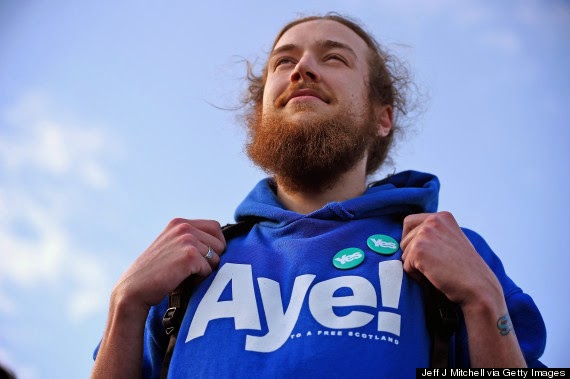Following an eighteen month-long campaign, Scotland finally voted to reject independence by a margin of 55% to 45%. This unprecedented vote captured and dominated the national debate, inspiring a record 84.59% turnout. Joshua Townsley breaks down and highlights the key voting trends based on the fascinating insight into how the 3,619,915 voters cast their ballots on the 18th September provided by Lord Ashcroft’s polling.
Full results: http://www.bbc.co.uk/news/events/scotland-decides/results
Ashcroft Poll conducted: 18th & 19th September, sample size: 2,047 adults (831 online, 1,216 telephone) Full tables can be found at http://lordashcroftpolls.com/2014/09/scotland-voted/. Caveats apply for polling data, including small sample size for certain groups (most notably for this poll, only 14 under-18s in sample).
Regional Breakdown
Local Authority
|
%Yes
|
%No
|
Orkney Islands
|
32.8
|
67.2
|
Scottish Borders
|
33.44
|
66.56
|
Dumfries & Galloway
|
34.33
|
65.67
|
Shetland Islands
|
36.29
|
63.71
|
East Renfrewshire
|
36.81
|
63.19
|
East Lothian
|
38.28
|
61.72
|
East Dunbartonshire
|
38.8
|
61.2
|
Edinburgh
|
38.9
|
61.1
|
Aberdeenshire
|
39.64
|
60.36
|
Perth & Kinross
|
39.81
|
60.19
|
Stirling
|
40.23
|
59.77
|
Aberdeen City
|
41.39
|
58.61
|
Argyll & Bute
|
41.28
|
58.72
|
South Ayrshire
|
42.13
|
57.87
|
Moray
|
42.44
|
57.56
|
Angus
|
43.68
|
56.32
|
Midlothian
|
43.7
|
56.3
|
West Lothian
|
44.82
|
55.18
|
Fife
|
44.95
|
55.05
|
South Lanarkshire
|
45.33
|
54.67
|
Clackmannanshire
|
46.2
|
53.8
|
Falkirk
|
46.53
|
53.47
|
Comhairle nan Eilean Siar
|
46.58
|
53.42
|
Highland
|
47.08
|
52.92
|
Renfrewshire
|
47.19
|
52.81
|
East Ayrshire
|
47.22
|
52.78
|
North Ayrshire
|
48.99
|
51.01
|
Inverclyde
|
49.92
|
50.08
|
North Lanarkshire
|
51.07
|
48.93
|
Glasgow
|
53.49
|
46.51
|
West Dunbartonshire
|
53.96
|
46.04
|
Dundee City
|
57.35
|
42.65
|
Demographic Breakdown
Party Preferences
Yes Scotland v Better Together
In terms of the impact both the Yes Scotland and Better Together campaigns made, a useful guide might be how voters who made their mind up since the beginning of the year voted. Among this cohort, 55% voted Yes, and 45% voted No. Among voters who made their decision in the last month of the campaign, 59% voted for independence. 52% of Yes voters made their mind up since the beginning of the year, compared to just 28% of No voters. 62% of No voters ‘always knew how they would vote’, while 39% of Yes voters made their decision during the last month. Ultimately, this seems to indicate that the Yes Scotland campaign did a better job of persuading late undecided voters, while the Better Together campaign began the campaign with a solid lead among voters who always knew how they would vote (66%).
 |
| Source: http://i.huffpost.com/gen/2010596/thumbs/o-YES-SCOTLAND-570.jpg |
The Issues
‘Neverendum’?
 |
| Source: http://i.telegraph.co.uk/multimedia/archive/02103/scotland-flag-1_2103925b.jpg |
Joshua Townsley is a PhD researcher at the University of Kent, specialising in political campaigning and electoral politics. For more information, see here: https://www.kent.ac.uk/politics/staff/assistant-lecturers/townsley.html








